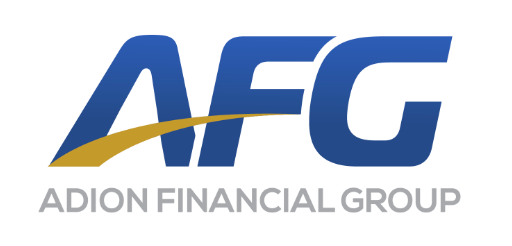
Top 3 Recommended Policies
Investing in real estate in Connecticut can be a lucrative venture, but it also comes with its own set of risks. One of the most critical safeguards for any property investor is securing the right investment property insurance. This comprehensive guide will walk you through everything you need to know about investment property insurance in Connecticut—from understanding the basics to navigating state-specific requirements and finding the best coverage for your needs.
What Is Investment Property Insurance?
Investment property insurance is a specialized type of insurance designed to protect rental properties, vacation homes, and other real estate investments from financial loss. Unlike standard homeowners insurance, which typically covers owner-occupied properties, investment property insurance is tailored to the unique risks associated with properties that generate income or are not occupied by the owner.
These policies generally cover property damage, liability claims, loss of rental income, and sometimes additional risks like vandalism or tenant-related damages. Because investment properties often have different risk profiles than primary residences, insurers usually require separate policies with specific terms. This distinction is crucial for investors to understand, as it ensures that they are adequately protected against the myriad of risks that can arise from owning and managing rental properties.
Moreover, investment property insurance can also include options for additional coverage, such as loss of rent due to property damage, which can be particularly beneficial during lengthy repairs. Investors can also explore endorsements that cover specific risks like equipment breakdown or even acts of terrorism, depending on the location and type of property. This flexibility allows property owners to customize their insurance policies to fit their unique investment strategies and risk tolerance.
Why Is It Important for Connecticut Investors?
Connecticut’s real estate market offers attractive opportunities, but it also presents challenges such as unpredictable weather, aging housing stock, and a diverse tenant base. Insurance protects investors from unexpected expenses that could otherwise erode profits or lead to significant financial hardship.
For example, Connecticut is prone to nor’easters and occasional hurricanes, which can cause flooding and wind damage. Without proper coverage, repairing these damages could cost tens of thousands of dollars. Additionally, liability protection is crucial if a tenant or visitor is injured on the property. This is particularly relevant in a state where older homes may have safety concerns that could lead to accidents, making comprehensive liability coverage a necessity for landlords.
Furthermore, the state’s evolving rental market, driven by a mix of long-term tenants and short-term vacation rentals, adds another layer of complexity. Investors must navigate local regulations that may require specific insurance provisions or compliance with safety standards. This dynamic landscape underscores the importance of having a robust insurance policy that not only covers physical damages but also aligns with local laws and market trends, ensuring that investors can adapt to changes while safeguarding their assets.

Key Coverage Components in Connecticut Investment Property Insurance
Understanding the typical components of investment property insurance helps investors make informed decisions and tailor policies to their specific needs.
1. Property Damage Coverage
This is the core of any investment property insurance policy. It covers physical damage to the building caused by events like fire, windstorms, hail, vandalism, and certain natural disasters. In Connecticut, where winter storms can cause roof collapses or frozen pipes, this coverage is essential.
However, standard policies often exclude flood damage, which is a significant consideration in coastal or flood-prone areas of Connecticut. Investors may need to purchase separate flood insurance through the National Flood Insurance Program (NFIP) or private insurers. Additionally, understanding the specific risks associated with the property's location can help investors assess whether they need to enhance their coverage. For instance, properties near rivers or the Long Island Sound may face unique challenges, prompting the need for more comprehensive flood protection or even additional endorsements to cover specific weather-related risks.
2. Liability Protection
Liability coverage protects property owners if someone is injured on their property and decides to sue. This can include medical expenses, legal fees, and settlements. Given Connecticut’s strict liability laws and the potential for slip-and-fall accidents during icy winters, liability protection is a must-have.
Moreover, it’s important for investors to consider the extent of their liability coverage. In high-traffic rental properties, such as those near universities or popular tourist destinations, the likelihood of accidents may increase, necessitating higher coverage limits. Additionally, some policies offer coverage for personal injury claims, which can include defamation or invasion of privacy, providing an extra layer of protection for landlords in today’s litigious environment.
3. Loss of Rental Income (Business Interruption)
If the property becomes uninhabitable due to a covered loss, this coverage compensates for lost rental income during repairs. For landlords relying on steady cash flow, this can be a financial lifesaver, ensuring mortgage payments and other expenses can still be met.
Investors should also be aware of the duration of coverage and any waiting periods that may apply. Some policies may only cover a limited timeframe, so understanding the specifics can help landlords plan for potential longer-term repairs. Furthermore, including a provision for increased expenses during the restoration period can be beneficial, as temporary accommodations or additional marketing efforts to attract tenants may incur extra costs.
4. Optional Coverages
Depending on the property and location, investors might consider additional coverages such as:
- Equipment Breakdown: Covers costly repairs to HVAC, boilers, or electrical systems.
- Tenant Damage Protection: Covers intentional or accidental damage caused by tenants.
- Environmental Liability: Important for properties with potential contamination risks.
- Umbrella Insurance: Provides extra liability coverage beyond standard limits.
In addition to these options, investors may also explore coverage for specific risks associated with their property type. For example, if the investment property is a multi-family unit, additional coverage for common areas, such as hallways and recreational facilities, may be necessary. Furthermore, as the real estate market evolves, staying informed about new insurance products and endorsements can help investors adapt their policies to better protect their assets against emerging risks.
Connecticut-Specific Factors Affecting Investment Property Insurance
Connecticut’s unique climate, regulatory environment, and real estate market nuances influence how investment property insurance is structured and priced.
Weather and Natural Disasters
Connecticut experiences a range of weather hazards, including heavy snow, ice storms, hurricanes, and flooding. According to the Connecticut Insurance Department, winter storms cause over $100 million in insured losses annually on average. This reality makes comprehensive property and liability coverage vital.
Flood risk varies widely across the state. Coastal towns like Stamford, New Haven, and Bridgeport face higher flood risks, while inland areas may have lower exposure. Understanding your property’s flood zone designation is critical, as flood insurance is generally not included in standard policies. Furthermore, the increasing frequency of extreme weather events due to climate change has led to heightened awareness among property owners regarding their insurance needs. Many are now opting for additional coverage options, such as endorsements for windstorm damage or increased limits for personal property, to safeguard against potential losses.
State Regulations and Tenant Laws
Connecticut has tenant-friendly laws that can affect insurance considerations. For example, landlords must maintain safe and habitable properties, which means insurance claims related to property maintenance and liability can be more frequent.
Additionally, Connecticut requires landlords to disclose certain information to tenants, including lead paint hazards in older buildings. Insurance policies may need to address these risks specifically, especially for properties built before 1978. The state also mandates that landlords carry liability insurance, which can further complicate coverage decisions. This legal framework emphasizes the importance of understanding not only the insurance landscape but also the rights and responsibilities that come with property ownership in Connecticut. Landlords may find it beneficial to engage with local legal experts to ensure compliance with evolving regulations, which can also impact their insurance premiums and coverage options.
Market Trends and Property Types
Connecticut’s investment properties range from single-family homes and multi-family units to commercial buildings and vacation rentals. Insurance needs differ significantly across these categories. Multi-family properties, for example, may require more extensive liability coverage due to the number of tenants and common areas.
Recent trends show an increase in short-term rentals through platforms like Airbnb and Vrbo. These properties often require specialized insurance policies or endorsements to cover unique risks associated with transient guests. Additionally, the growing popularity of these rentals has led to increased scrutiny from local governments, resulting in new regulations that can impact insurance requirements. Property owners may need to navigate zoning laws and obtain permits, which can further complicate the insurance landscape. As the market evolves, staying informed about local ordinances and insurance innovations becomes crucial for investors looking to maximize their returns while minimizing their risks.
How to Choose the Right Investment Property Insurance in Connecticut
Finding the best insurance policy involves evaluating your property, risks, and financial goals carefully.
Assess Your Property’s Risk Profile
Start by considering the location, age, and condition of your property. Is it in a flood zone? Does it have an older roof or outdated electrical systems? Are you renting to long-term tenants or short-term vacationers? These factors influence the types and amounts of coverage you need. Additionally, consider the neighborhood's crime rate and the potential for natural disasters, such as hurricanes or snowstorms, which are not uncommon in Connecticut. A thorough risk assessment will not only help you choose the right coverage but also allow you to implement preventive measures to mitigate those risks, such as installing security systems or upgrading your property's infrastructure.
Compare Quotes from Multiple Insurers
Insurance premiums can vary widely based on the insurer’s underwriting criteria and your property’s risk factors. It’s advisable to obtain quotes from several companies specializing in investment property insurance in Connecticut. Look beyond price—compare coverage limits, deductibles, exclusions, and customer service reputation. Don't hesitate to ask for a breakdown of each quote, as some insurers may offer additional perks such as free inspections or risk assessments that could save you money in the long run. Additionally, consider the financial stability and claims-paying history of the insurance companies you are evaluating, as this can give you peace of mind knowing that they can handle claims efficiently when needed.
Understand Policy Exclusions and Limitations
Carefully review what is and isn’t covered. For example, many policies exclude flood and earthquake damage, which may require separate policies. Also, check for any caps on liability or loss of rental income payouts. It’s essential to be aware of any specific conditions that could void your coverage, such as neglecting necessary maintenance or failing to comply with local building codes. By understanding these exclusions, you can better prepare for potential risks and consider additional endorsements or riders that may enhance your coverage, such as adding protection for personal property or liability coverage for common areas in multi-unit dwellings.
Consider Working with a Local Insurance Agent
Connecticut-based insurance agents understand the state’s market and regulatory environment. They can help tailor policies to your specific needs, identify discounts, and assist with claims if necessary. Local agents often have established relationships with insurers, which can lead to better rates and more personalized service. Furthermore, they can provide insights into regional trends that may impact your investment property, such as changes in local laws regarding rental properties or shifts in the housing market that could affect your insurance needs. By leveraging their expertise, you can navigate the complexities of investment property insurance with greater confidence and clarity

Costs and Discounts for Connecticut Investment Property Insurance
Insurance costs vary depending on coverage levels, property characteristics, and insurer. On average, investment property insurance in Connecticut can range from $1,200 to $3,000 annually for a single-family rental property, but this can be higher in flood-prone or high-value areas.
Factors Influencing Premiums
- Location: Properties in coastal or flood zones generally have higher premiums.
- Property Age and Condition: Newer or well-maintained properties usually cost less to insure.
- Coverage Limits and Deductibles: Higher limits and lower deductibles increase premiums.
- Claim History: Properties with previous claims may face higher rates.
Available Discounts
Many insurers offer discounts that can help reduce premiums, such as:
- Multi-Policy Discount: Bundling investment property insurance with other policies like auto or commercial insurance.
- Security Features: Installing smoke detectors, security systems, and deadbolt locks.
- Claims-Free Discount: Maintaining a clean claims history over several years.
- New Construction Discount:
For recently built or renovated properties.
Filing Claims and Managing Risks
Understanding how to file claims and proactively manage risks can save time and money in the long run.
Filing a Claim in Connecticut
If damage or loss occurs, promptly notify your insurer and provide detailed documentation, including photos, repair estimates, and police or fire reports if applicable. Connecticut’s Insurance Department recommends keeping copies of all correspondence and maintaining clear records throughout the claims process.
Working with a local agent can facilitate smoother claims handling and ensure you receive fair compensation.
Risk Management Tips for Connecticut Investors
- Regular Maintenance: Prevent costly damage by addressing roof leaks, plumbing issues, and HVAC problems promptly.
- Tenant Screening: Reduce liability and property damage risks by thoroughly vetting tenants.
- Safety Improvements: Install handrails, adequate lighting, and non-slip surfaces to prevent accidents.
- Emergency Preparedness:
Have a plan for winter storms, flooding, and other emergencies common in Connecticut.
Conclusion: Protecting Your Connecticut Real Estate Investment
Investment property insurance is an indispensable part of managing real estate assets in Connecticut. By understanding the specific risks associated with the state’s climate, regulations, and market, investors can secure appropriate coverage that safeguards their financial interests.
Choosing the right policy involves careful assessment of property risks, comparing insurers, and considering additional coverages like flood insurance or tenant damage protection. Working with knowledgeable local agents and practicing proactive risk management further enhances protection and peace of mind.
Whether you own a single-family rental in Hartford or a multi-unit building in New Haven, investing in the right insurance coverage ensures your property remains a profitable and secure asset for years to come.
Contact Us
Phone
Locations
Connecticut Location
703 Hebron Ave., 3rd Floor, Glastonbury, CT 06033
North Carolina Location
436 East 36th St., Charlotte, NC 28205


